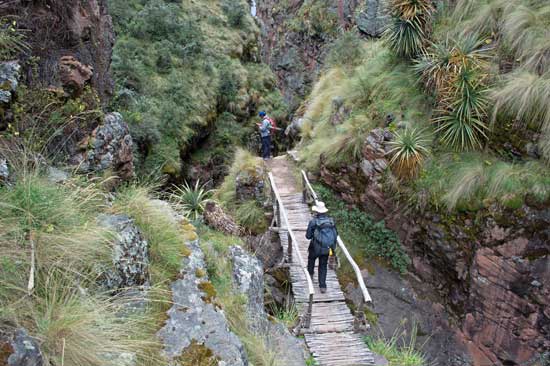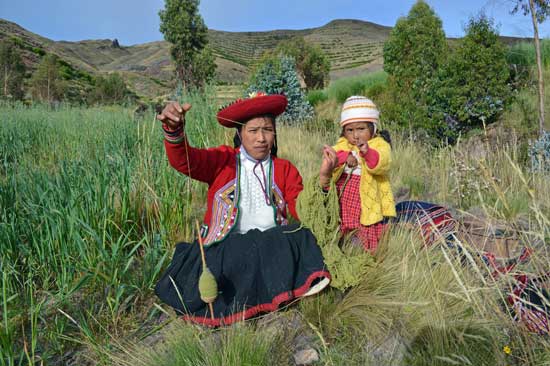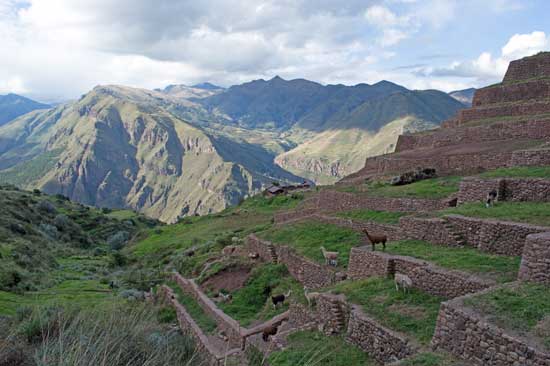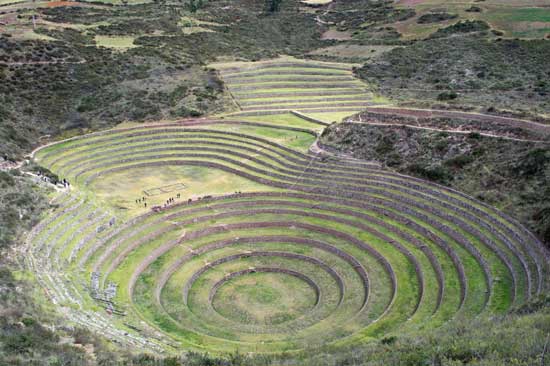

Twenty five years ago, it was easy to stroll into the tranquil provincial capital of Cusco and leave immediately on a self-guided Inca Trail trip. How times have changed!
Visits to Machu Picchu have since skyrocketed and the Peruvian government now regulates Inca Trail numbers to 500 persons per day, including the cooks and porters who carry all the food, tents and other supplies. Once the support staff (about 300) are accounted for, the remaining 200 permits are allocated for tourists. Wannabe hikers must book months in advance through a certified guiding service as spots sell out quickly.
It’s easy to understand why the Inca Trail is so popular. For some time it was regarded as one of the world’s greatest hikes and was high on every travelers bucket list. However, in recent times the Trail seems to have fallen off most of the “best-of” lists. Despite the permit system, it’s clear that overcrowding has taken its toll on the trail and now hikers are seeking alternative routes to escape the crowds.
It’s for this very reason that I was keen to get off the beaten path and enjoy some Inca magic without the congestion. Enter Huchuy Qosqo. This trek leads to a remote archaeological site north of Cusco and then ends with an essential tour of Machu Picchu.

At the time of booking, Javier from Peru Andean Experience suggests I extend the Huchuy Qosqo trek with an extra night at a rural homestay. Staying with a local family at the high-altitude village of Chinchero I would get the opportunity to learn a little about their life and experience some Andean culture and hospitality first hand. I sign up without a second thought.
At 3,700m, Chinchero is 400m higher than Cusco. It takes about an hour from Cusco and I’m greeted by a member of the host family at the bus stop. Facilities at the home are relatively basic. I’m provided with a private room with a bed and blankets.
Many Chinchero families have built extra rooms onto their houses for guests and have received hygiene training to accommodate foreign visitors. Communal bathing and toilet facilities are shared with the family. Not only is the homestay a great experience, it also means visitors directly contribute to the local economy and improve the rural development of the community.
Most of the people in the villages around Cusco speak Quechua as their first language and Spanish as their second. It helps if you can speak a little Spanish but if you’re like me you will find waving your arms around and sign language often works. Communication at times leads to an amusing game of charades where I attempt to act out a phrase and the family would try to guess what I was talking about. Nevertheless, it’s great fun.

Throughout the day I help the family go about their normal routine. We attend to the nearby crops, harvest potatoes and pick some corn. As the sun sets, I help the local farmers guide their sheep into their barns that protect them from foxes and pumas.
Dinner is served and consists of quinoa soup, local trout and Guinea pig (considered a delicacy). And of course plenty of fresh potatoes. The home style food is delicious and with a full belly it’s not long before the lights are out.
The following morning my guide Javier arrives and I farewell the host family. “Adios Amigo” is repeated over and over as we depart. From the homestead we start the hike up the mountain above the village. The higher we go the more I feel the effects of the altitude. We take a break every 15 minutes which allows me to catch my breath. It also provides the chance to stop and appreciate the view behind us. In the distance the snow- capped Salkantay mountain dominates the horizon. Below us sits village farmhouses and the spectacular Lake Piuri.
We continue upwards until we reach the ridge where the trail leads into open high country with a beautifully green valley stretching out as far as the eye can see. After few hours we reach Huchuy Qosqo Pass at 4,450m: the highest point of the trek.
As we descend, the trail passes a small farming community and then travels through a narrow but spectacular canyon. We remain on a section of ancient Inca steps and then cross a primitive Inca bridge.

From here it’s not long until we are faced with stellar views of the Sacred Valley. We stop at numerous viewpoints to admire the serenity. The trail proceeds down another well-maintained Inca staircase which leads us to the magnificent citadel of Huchuy Qosqo.
We sit on a terrace and Javier explains the significance of the site. Huchuy Qosqo was originally an important administrative and military center in the region. Perched above the Urubamba Valley, the site offers spectacular views over the Cordillera de Vilcanota mountain range.
Unfortunately it is getting dark so we continue on to a nearby hamlet where we stay with another local family for the night. In the morning we take the short walk back to the Huchuy Qosqo where Javier guides me through the ruins.
Huchuy Qosqo is Quechua for “Little Cusco”. However unlike the Plaza De Armas in Cusco you can stroll around without getting solicited for a souvenir, a sweater or a number of tourist services. In fact the only people you might see are a trickle of hikers, a few archaeologists doing some maintenance work or some local children playing soccer on the main terrace.
The trail to the village of Lamay snakes its way down the mountain with a series of switchbacks. We board a local bus to Ollantaytambo and then the train to Aguas Calientes which lies at the base of Machu Picchu.
The following morning is an early start to ensure we catch one of the first shuttles to Machu Picchu. Considering what I had experienced over the previous three days it seems the sacred site is going to be the icing on the cake. And the first glimpse of the lost city does not disappoint. No postcard or travel brochure can prepare you for the moment you first set eyes on Machu Picchu. Breathtaking is not an adequate description. Despite the huge tourist influx, the site manages to retain its air of grandeur and mystery.

We take position on a farming terrace and wait for the first rays of light to hit Huayna Picchu. For the next few hours Javier guides me through the various structures, chambers and temples. He provides a fascinating insight into the construction of the city and a detailed history of the Incan civilization.
It’s totally understandable why the classic Inca Trail is so popular. However, if you miss out on a permit, don’t worry! If you’re seeking solitude or remote mountain villages, you’re in luck! If you’re looking for an authentic Andean experience you’ll be happy to know that there are plenty of excellent alternatives.
